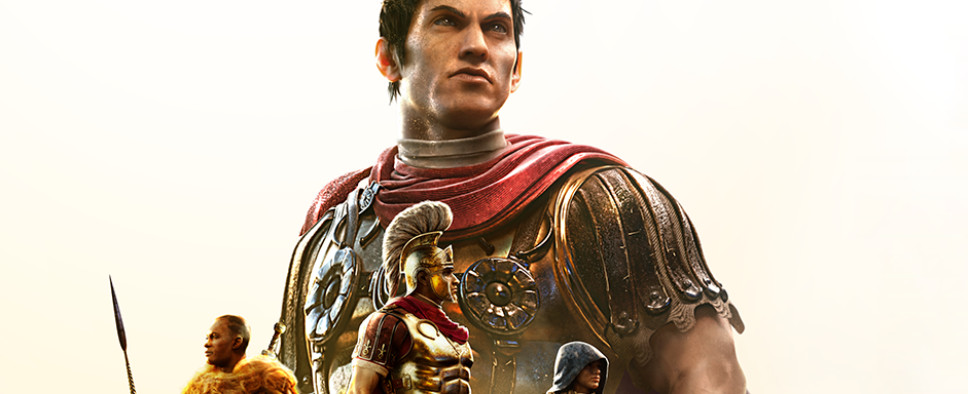Expeditions: Rome Review - Page 2
-
Category: ReviewsHits: 10289

Article Index
You'll need the latter to lead your soldiers into battle represented by this kind-of-sort-of card game, with the abovementioned stratagems acting as the cards you'll have at your disposal. You will also be able to equip and level up your officers and later use them as companions for the special pacification missions, or just in general. This will result in a party roster of around 20 characters, with regular encounters limiting your party to 6 members.
Now, if the above sounds more like a strategy game than an RPG, don't worry, this whole legion business mostly exists to provide your adventure with a sense of scale and an opportunity to navigate yourself into random encounters and events that will usually make your life harder in some way, but occasionally allow you to unlock some new perk for your character or discover a new crafting recipe.
In fact, this is one of my bigger gripes with the game. Back in Conquistador, you had to carefully manage your resources, and overall, it felt like you were exploring a wild and untamed land where at any point you were a reckless detour away from starvation.
Viking moved away from this system in favor of a Baldur's Gate-style overworld map where you just clicked on locations to go there. And now Rome sits somewhere in the middle where you have theoretically dwindling supplies, but it's all been simplified to the point where you would have to actively try to lose if for some reason you want to run out of resources or get defeated in a legion battle.
The real meat of the game then is you and your party following your army and personally dealing with various high-priority problems that range from bloody power struggles to some recreational tomb raiding. Those parts play as a more traditional RPG where you interact with NPCs, complete quests, and make oftentimes far-reaching choices. Most quests, even the optional ones, will have multiple, sometimes not obvious, solutions and mutually-exclusive rewards, suggesting a certain degree of replayability. Just going by some recent patch notes mentioning things I didn't even know were possible, there's way more branching in this game than what my single playthrough suggested.
It also helps that the game's writing is pretty good. It's atmospheric without being too wordy, the big overall story is intriguing and makes sense up until the final acts, side-quests tend to be fairly robust. It's good, basically.
Your story companions are both useful in combat and aren't excessively annoying, which is a fairly rare thing these days. They all come with their own personal stories that gradually unfold as the game progresses. And while you can regularly check back with them while making camp, they tend not to overburden you with their life stories all at once, and instead save their big story developments for when you return to Rome.
In fact, the bulk of the game's dialogues and companion interactions come in the form of these ambient conversations, Mass Effect-style. Basically, you'll be running around your camp or some town and you'll overhear various civilians, legionaries, or your companions gossiping or discussing some recent developments. Those conversations tend to be fairly amusing and provide the game with a lived-in feeling.
Which is a good thing, because outside of those, the game's locations tend to really lack interactivity. It seems like three games in, Logic Artists still haven't been able to figure out how to craft good social hubs, or what makes looting fun.
You see, Conquistador was one big map and most of the stuff you picked up were resources you really needed to survive. Viking then, with its new area-based structure, turned the game into a looting simulator by packing an ungodly number of boxes into each of its areas. Rome tries to fix this by replacing countless boxes with around 1-3 lootable objects per area, but it doesn't address the fact that at the end of the day, you're just scanning the map for highlighted objects and then waiting for your guys to get there, which can take a while, especially when ladders are involved. It's a waste of time that could just as easily have been replaced with a loot screen you got upon exiting an area.
On rare occasions, some box will be guarded and trying to loot it will lead to a battle. But those are the exceptions to the usual rule. The same can be said about NPCs. Outside of those ambient dialogues, you usually can only talk to a couple of NPCs per area, which makes those areas feel quite barren. And it's a great shame because they tend to look quite nice from an architectural and aesthetic standpoint. It would've been fun to actually explore them instead of just waiting while your characters jog between points of interest.

